
The name Genesis stands for a Polish manufacturer of PC components. Founded in 2011, the manufacturer’s main focus was initially on gaming components such as input devices, PC accessories and audio devices. However, the manufacturer’s portfolio now also includes a number of cases. This was recently expanded to include the Diaxid 605 series. We have both the GENESIS Diaxid 605F and the GENESIS Diaxid 605 ARGB for you to test today.
Durable, elegant, efficient. These are the three words with which the manufacturer GENESIS introduces the product description of the Diaxid 605. In addition to high hardware compatibility, excellent cooling performance, a unique style and extensive dust filtration are also advertised in some detail. The GENESIS Diaxid 605 is priced between €80 for the version without ARGB (Diaxid 605F) and €100 for the version with ARGB. The ARGB version is also available in white. Find out in this test whether the new midi tower can keep up with the strong competition in this price range.
Technical details
| Model: | GENESIS Diaxid 605F | GENESIS Diaxid 605 ARGB Black |
| Case type: | ATX | ATX |
| Dimensions: | 217 mm (W) x 420 mm (H) x 466 mm (D) | 217 mm (W) x 420 mm (H) x 466 mm (D) |
| Weight: | 7.2 kg | 7.1 kg |
| Material: | Steel, plastic, tempered glass | Steel, plastic, tempered glass |
| Color: | Black | Black color |
| Front connections: | 1x USB 3.1 Gen 2 Type-C, 2x USB 3.0 Type-A, 1x headphones, 1x microphone | 1x USB 3.1 Gen 2 Type-C, 2x USB 3.0 Type-A, 1x headphones, 1x microphone |
| Drive bays: | 2x 3.5″ or 1x 3.5″ and 1x 2.5″ 2x 2,5″ |
2x 3.5″ or 1x 3.5″ and 1x 2.5″ 2x 2,5″ |
| Expansion slots: | 7x horizontal | 7x horizontal |
| Form factors: | ATX, mATX, ITX | ATX, mATX, ITX |
| Ventilation: | Front: 3x 120/ 140 mm Rear: 1x 120 mm Top: 2x 120 / 140 mm Bottom: 2x 120 mm |
Front: 3x 120/ 140 mm Rear: 1x 120 mm Top: 2x 120 / 140 mm Bottom: 2x 120 mm |
| Radiators: | Front: 1x 240/ 280/ 360/ 420 mm Rear: 1x 120 mm Top: 1x 240/ 280 mm |
Front: 1x 240/ 280/ 360/ 420 mm Rear: 1x 120 mm Lid: 1x 240/ 280 mm |
| Max. CPU cooler height: | 168 mm | 168 mm |
| Max. Graphics card length: | 351 mm | 351 mm |
| Max. Power supply length: | 215 mm (with HDD cage), 300 mm (without HDD cage) | 215 mm (with HDD cage), 300 mm (without HDD cage) |
| Space for cable management: | 25 mm | 25 mm |
| Price: | €80 | €100 |
| Special features: | Dust filter, cable management, tempered glass, 5x pre-installed 120 mm fans, integrated ARGB and PWM control board | Dust filter, cable management, tempered glass, 4x pre-installed ARGB fans, integrated ARGB and PWM control board |
GENESIS Diaxid 605 test: The scope of delivery
GENESIS packs both versions of the Diaxid 605 in a relatively plain cardboard box. In addition to black printed illustrations of the Diaxid 605, the packaging features numerous red printed areas. The cardboard box also features the manufacturer’s logo, a list of the most important features and a table showing all the key technical data. On the Diaxid 605 ARGB, there are also small indications of the ARGB fans installed inside.
In the box, the manufacturer wraps the midi tower with two blocks of hard polystyrene and a plastic film. Considering the weight, however, the polystyrene elements are relatively thin. All mounting accessories can be found in a simple plastic bag, which is attached to the back of the motherboard tray with cable ties. All necessary mounting screws, a few cable ties, printed mounting instructions and a mainboard speaker are included. Also pre-installed are two dust filters, four 120 mm ARGB fans (Diaxid 605 ARGB) or five normal 120 mm fans (Diaxid 605F) as well as the corresponding PWM and ARGB control board.
Exterior impression
Even though Genesis speaks of a unique look, the front panel in particular has, in our view, a strong visual resemblance to the Fractal Design Meshify or the Montech X3. The front is dominated by a large area of mesh, which has been provided with several bulges. This makes the case look a little more eye-catching and playful even when unlit. If you detach the front panel with plastic frame from the body, you can see mounting rails for up to three 120 mm (pre-installed) or three 140 mm fans behind it. There is no additional dust filter on the front, as the curves of the mesh grille have a diameter of 0.8 mm. This structure is intended to ensure a high airflow and at the same time keep out coarse dust.
The design of the lid remains airy. GENESIS has equipped it with a large fan grille, which also offers mounting points for two 120 mm or two 140 mm fans. A magnetic mesh dust filter mat has also been attached above it. The magnetic holder makes removal and cleaning much easier. The I/O panel can also be found in the lid. This has three USB ports (1x USB 3.1 Gen 2 Type-C, 2x USB 3.0 Type-A), two sockets for headphones and microphone and two buttons for power and reset. GENESIS also installs a power and HDD activity LED.
As befits a modern case, the left side panel is of course made of 4 mm thick tempered glass, which is also slightly tinted. To simplify assembly, the glass panel has also been glued to a steel frame, which can be attached to the rear of the midi tower with two knurled screws. The right-hand side panel consists of a classic 0.7 mm thick steel panel, which has knurled screws and a recessed grip.
There are no surprises at the back. The opening for the power supply unit can be found in the lower area and a total of seven ventilated and reusable PCI slot covers can be seen above it. The Diaxid 605 also offers an additional space at the rear for mounting a 120 mm fan as well as additional ventilation openings directly under the lid. This space is also already fitted at the factory on both variants.
Four sturdy plastic feet with a metal look ensure that the Diaxid 605 stands securely. Their height also ensures good ventilation for the power supply unit. If the housing is placed on the floor, an additional filter mat made of mesh prevents heavy dust contamination. It is attached using magnets and additional steel lugs. In addition to a ventilation grid, GENESIS also equips the base with various mounting points for data carriers and an HDD cage.
Interior impression
GENESIS uses a tried and tested layout in the interior of the Diaxid 605. The large main chamber offers space for an EATX or ATX mainboard, a long graphics card and a large CPU cooler or up to two radiators. The mainboard tray is completely flat and is equipped with 5 large, rubberized and one small cable management opening.
Due to the lack of hard disk cages in the main chamber, the three pre-installed fans at the front can transport cold air into the interior unhindered, which can then escape actively via the rear fan and passively via the ventilation openings in the lid once the components have been cooled. With the Diaxid 605F, a fifth pre-installed fan in the lid also provides additional active cooling.
Two additional fans can be mounted above the perforated power supply cover. Unfortunately, the manufacturer does not include suitable screws with the accessories. The cover also features a cut-out for a 420 mm water cooling radiator in the front and four additional rubberized openings for the graphics card power cable and other connection cables. Finally, the model name is printed on the side.
At the rear of the mainboard tray, the manufacturer has implemented 16 eyelets for cable ties and has also given the Diaxid 605 25 millimeters of space for cables. This should simplify the laying of all cables considerably or make it child’s play. Of course, the obligatory cut-out in the motherboard tray should not be missing, which should enable the subsequent installation of CPU coolers with a backplate. The last point to mention at this point is the control board for the case fans, which GENESIS also places at the rear of the mainboard.
A look under the power supply cover reveals the mounting position for the PSU, which can be placed on two elongated rubber strips to minimize vibrations. In front of it, the modular HDD cage can be seen, which can either be attached in two different positions or removed completely.
The tool-free HDD cage is attached to the base using four rubberized screws, which are also intended to have a decoupling effect. Two 3.5″ hard disks or one 3.5″ and one 2.5″ HDD can be installed in this cage. The installation of the data carriers themselves is not decoupled and requires tools. Two additional 2.5″ SSDs can be screwed to a modular steel frame at the rear of the mainboard tray.
Processing and version differences
The weight of an enclosure is often a good indicator of the strength of the material used. Compared to the dimensions of the Diaxid 605, the stated total weight of around 7.1/ 7.2 kilograms is not bad at all. The steel used is 0.7 millimetres thick in most places and the glass window is also 4 millimetres thick. In addition, the paintwork is generally neat and tidy and there are no sharp edges or other processing defects.
But now let’s take a look at the differences between the two variants. Basically, the Diaxid 605 ARGB and the Diaxid 605F share a body with an identical basic structure. The only difference between the two variants is that the Diaxid 605 ARGB comes from the factory with four 120 mm ARGB fans and the Diaxid 605F comes from the factory with five black, unlit 120 mm fans instead. In both cases, however, GENESIS installs the PWM and ARGB control board. This means that the GENESIS Diaxid 605F can also be easily converted to ARGB lighting.
GENESIS Diaxid 605 test: Installing the components
Now we come to the system installation for the GENESIS Diaxid 605 test. As hardware we use an AMD Ryzen 5 1400* on an ASUS TUF Gaming B550M-Plus* with 16GB Crucial Ballistix Sport LT gray DDR4-2666*. The Ryzen is cooled by an Alpenföhn Brocken 4* and is overclocked to 3.8 GHz (1.175 V). A Gigabyte AORUS GTX 1060 6GB is responsible for the image output. The power supply is provided by the fully modular LC-Power LC550 V2.31 Platinum*.
The installation and cabling of all components went smoothly and quickly. There is plenty of room to work in the main chamber and there is also sufficient space behind the motherboard tray for laying and tying down the cables. The large number of eyelets for cable ties were particularly helpful here. The pre-installed spacers also save time during assembly. The fully assembled test system looks good thanks to the well-placed cable management openings and presents itself excellently.
The hardware compatibility shown is decent but not outstanding. While there are no complaints in the area for CPU air coolers with a maximum height of 168 mm, the maximum length for graphics cards without a front radiator of 351 mm is rather mediocre and is due to the shallower depth of the Diaxid 605. If you subtract a possible front radiator including fan, then less than 300 mm remains for the GPU, which is unfortunately simply not enough for many high-end cards. The power supply unit can be a maximum of 215 mm long with the HDD cage installed and 300 mm without the HDD cage.
In addition to air cooling, the Diaxid 605 also offers plenty of space for radiators, at least considering its size. GENESIS states that a maximum of a 420 mm radiator can fit in the front or a 280 mm radiator in the lid. With this combination, it should be possible to install a very powerful water cooling system in the Diaxid 605. As always, however, the information should be treated with caution, as high RAM modules or motherboard coolers can quickly restrict the maximum sizes in the lid.
The manufacturer installs a total of five 120 mm Oxal 120 fans in the GENESIS Diaxid 605F. These are plain black in design and have a maximum rotation speed of 1300 revolutions per minute. The fans are each connected via a conventional 3-pin connector, but are connected to the pre-installed control board at the factory. In addition, the fan frame is fitted with rubber pads on both sides for decoupling.
The four pre-installed 120 mm ARGB fans in the Diaxid 605 ARGB have a black fan frame and a milky white rotor with a total of nine fan blades. Lighting is provided by ten LEDs in the fan hub. The 3-pin fans are connected either to the integrated PWM and ARGB control board or directly to the mainboard if it has the appropriate number of fan connectors or ARGB headers.
ARGB headers.
Load test
Finally, we come to the temperatures reached in the GENESIS Diaxid 605F and GENESIS Diaxid 605 ARGB test. Prime95 and FurMark 2 were run for 30 minutes at a room temperature of 20 °C during the stress test. In addition, the stress test was carried out in the factory fan configuration with three different speeds (minimum speed, 50% PWM and 100% PWM). The results are listed in the following table.
Scenario |
Temperature |
GENESIS Diaxid 605F |
|
| CPU: 50% PWM (1100 rpm) GPU: 50% PWM (1650 rpm) Front: 3x 120 mm minimum speed (650 rpm) Rear: 1x 120 mm minimum speed (650 rpm) Top: 1x 120 mm minimum speed (650 rpm) |
CPU: 58.6 °C GPU: 66.0 °C |
| CPU: 50% PWM (1100 rpm) GPU: 50% PWM (1650 rpm) Front: 3x 120 mm 50% (810 rpm) Rear: 1x 120 mm 50% (810 rpm) Top: 1x 120 mm 50% (810 rpm) |
CPU: 56.4 °C GPU: 64.1 °C |
| CPU: 50% PWM (1100 rpm) GPU: 50% PWM (1650 rpm) Front: 3x 120 mm 100% (1250 rpm) Rear: 1x 120 mm 100% (1250 rpm) Top: 1x 120 mm 100% (1250 rpm) |
CPU: 53.4 °C GPU: 61.9 °C |
| GENESIS Diaxid 605 ARGB | |
| CPU: 50% PWM (1100 rpm) GPU: 50% PWM (1650 rpm) Front: 3x 120 mm minimum speed (490 rpm) Rear: 1x 120 mm minimum speed (490 rpm) |
CPU: 64.0 °C GPU: 67.3 °C |
| CPU: 50% PWM (1100 rpm) GPU: 50% PWM (1650 rpm) Front: 3x 120 mm 50% (790 rpm) Rear: 1x 120 mm 50% (790 rpm) |
CPU: 57.9 °C GPU: 64.6 °C |
| CPU: 50% PWM (1100 rpm) GPU: 50% PWM (1650 rpm) Front: 3x 120 mm 100% (1200 rpm) Rear: 1x 120 mm 100% (1200 rpm) |
CPU: 54.6 °C GPU: 62.9 °C |
If you take a look at the measured values, you will quickly realize that the GENESIS Diaxid 605, regardless of the variant, can impress with its excellent cooling performance thanks to the pre-installed fans and the mesh front. Even at a minimum speed of 500 rpm (Diaxid 605 ARGB) and 650 rpm (Diaxid 605F), the maximum temperatures are far from the critical range. At maximum speed of around 1200 rpm, our test system also achieved excellent temperatures. The additional fan in the Diaxid 605F provides another 2 and 3 degrees better results.
At full speed, however, the fans can be heard very clearly from the system. We have heard louder examples, but the fans should definitely be throttled back for silent systems. At minimum speed, on the other hand, the fans are barely audible, if at all. However, occasional grinding noises from the fan bearings are then annoying. Another negative aspect we noticed was that our mainboard was unable to respond properly to the 3-pin fans connected to the PWM controller. If GENESIS had installed 4-pin PWM fans directly, the problem would probably not have occurred.
GENESIS Diaxid 605 ARGB test: The lighting options
Only the Diaxid 605 ARGB with its four pre-installed 120 mm ARGB fans offers the option of activating lighting. The ten LEDs in the fan hub are controlled by the control board on the rear, which is also pre-installed in the Diaxid 605F without lighting. The board offers a total of five PWM or five ARGB connections and can be connected to the mainboard via a single PWM or 3-pin 5V ARGB header. This means that control is possible via the classic software solutions of the mainboard manufacturers. Finally, a few impressions of the activated lighting.
GENESIS Diaxid 605 ARGB test: Conclusion
Both the GENESIS Diaxid 605F and the GENESIS Diaxid 605 ARGB made a positive impression on us overall. We were particularly impressed by the basic design, the generous amount of space and the extensive features. Magnetic dust filters, four illuminated or five non-illuminated fans including PWM and ARGB control board, a modern I/O panel and rubberized cable grommets. At first glance, hardly anything is left to be desired. In addition, there is a neat finish and excellent cooling performance. Even a 420 mm radiator can be installed in the front.
However, there are still negative aspects to both versions. GENESIS only ever installs 3-pin fans. In our case, this meant that we were unable to control the fans with the PWM board via the mainboard. This makes the board unusable and an unnecessary cost factor. In addition, at certain speeds, both the black and the illuminated fans make audible bearing noises. Finally, the slightly shallower depth of the Diaxid 605 means that graphics cards can be a maximum of 351 millimeters long if no radiator is placed in the front. Unfortunately, many high-end cards simply no longer fit into this midi tower with a radiator.
Finally, the purchase price is of course also included in the overall rating. The GENESIS Diaxid 605F currently costs around €80, the Diaxid 605 ARGB around €100. Considering the overall package and the features on offer, the prices seem reasonable. Nevertheless, the well-known competition is very close and the Phanteks XT Pro Ultra in particular offers similar features and is even cheaper. However, as the GENESIS brand is less well-known overall, the cases will have to become a little cheaper on the open market in order to be fully competitive.
GENESIS Diaxid 605
Workmanship
Structure
Features
Cooling
Value for money
87/100
The Diaxid 605 case series from GENESIS offers decent features, excellent cooling performance, sufficient space for hardware and doesn't cost the earth. However, the well-known competition in the target price range is already very strong and in some cases better represented.
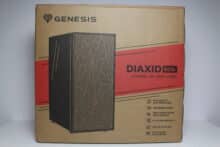

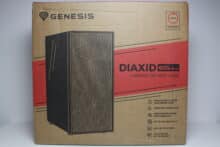






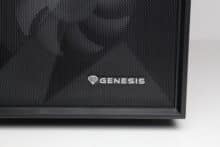
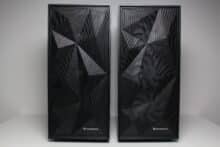

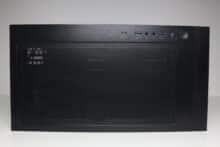


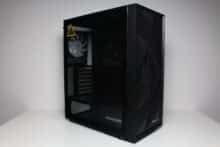
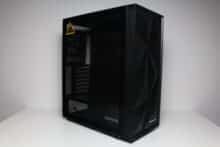

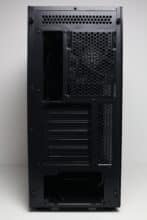
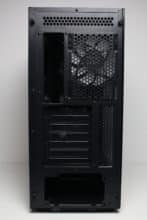
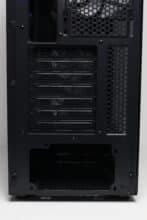
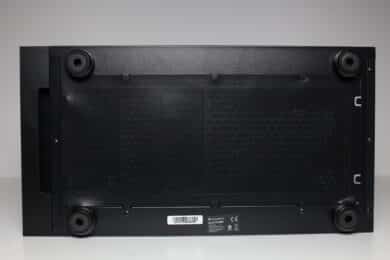

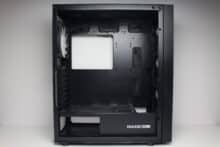

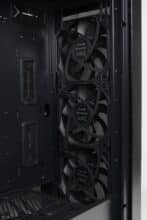
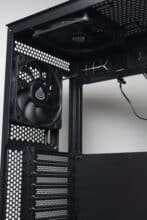
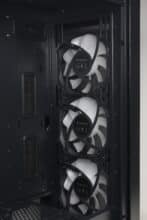
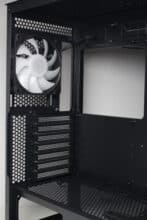
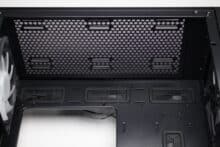
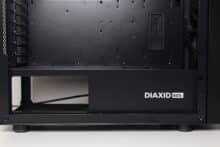

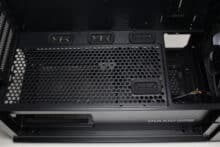
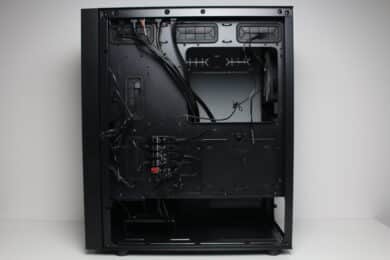

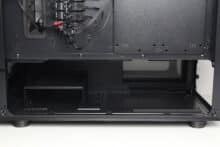

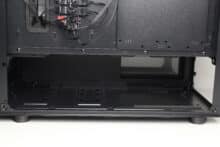


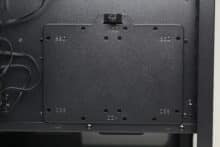
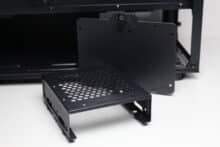
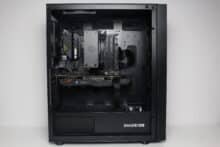
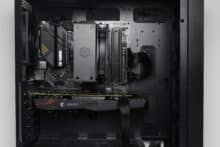


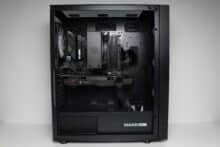
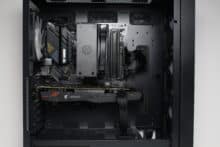


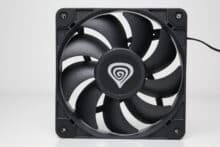
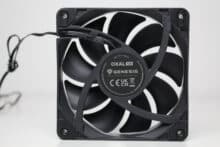





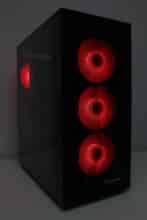

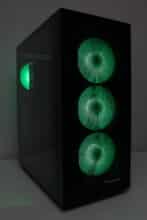
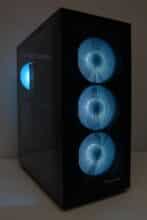


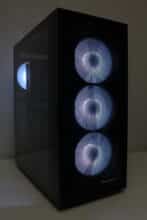
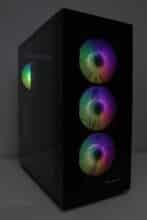
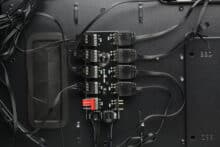




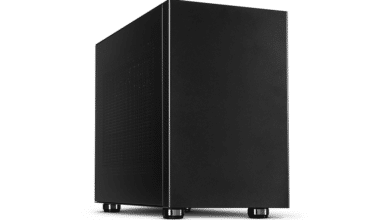
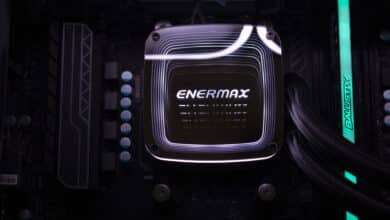

No replies yet
Neue Antworten laden...
Gehört zum Inventar
Beteilige dich an der Diskussion in der Basic Tutorials Community →